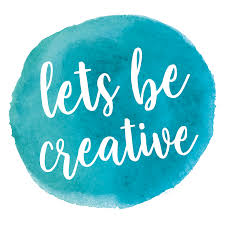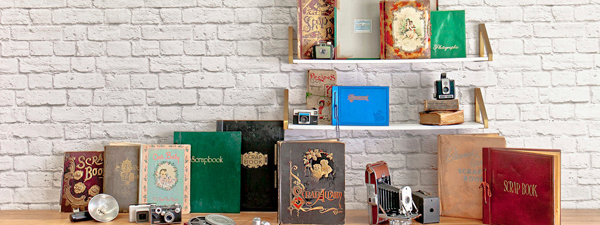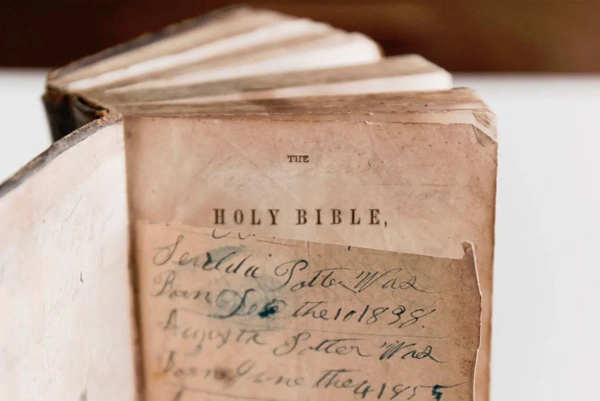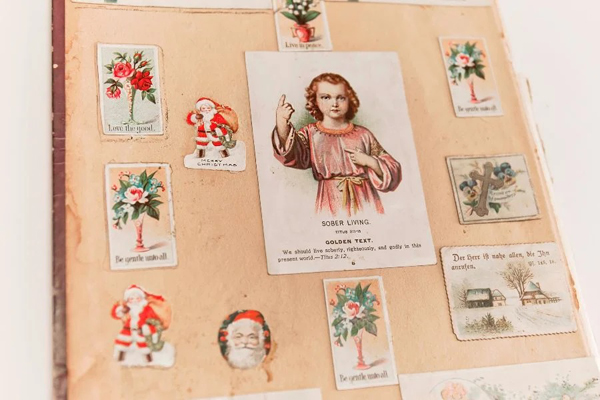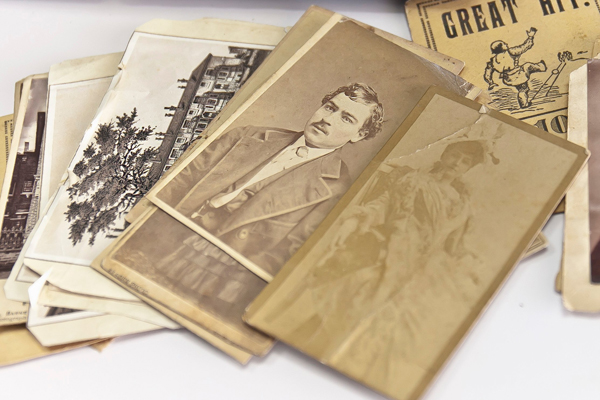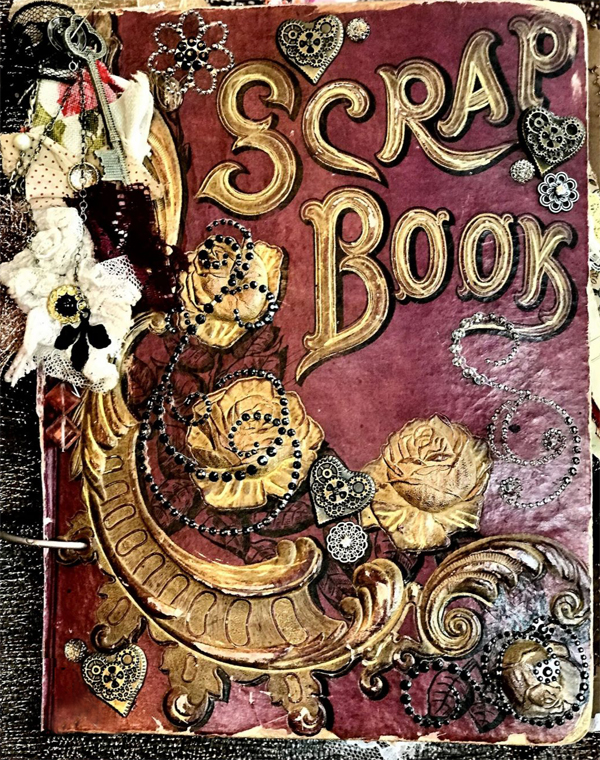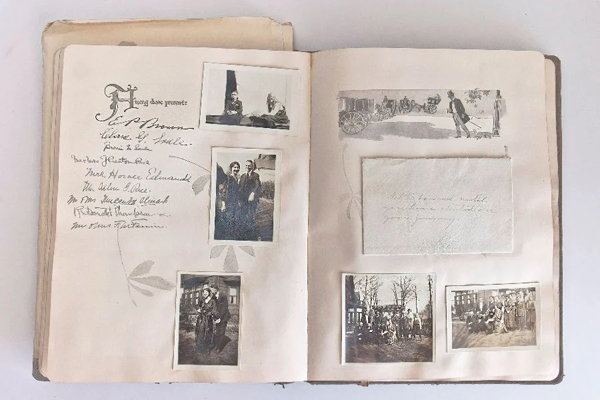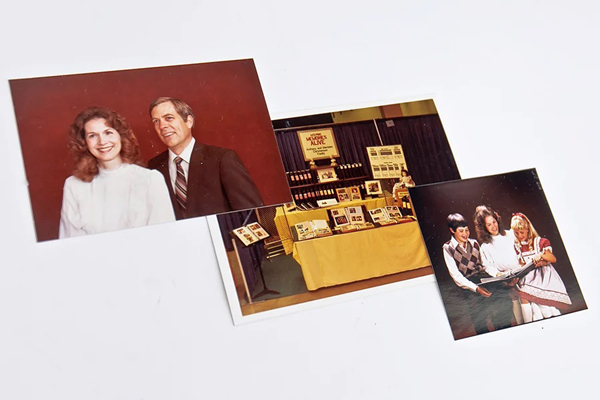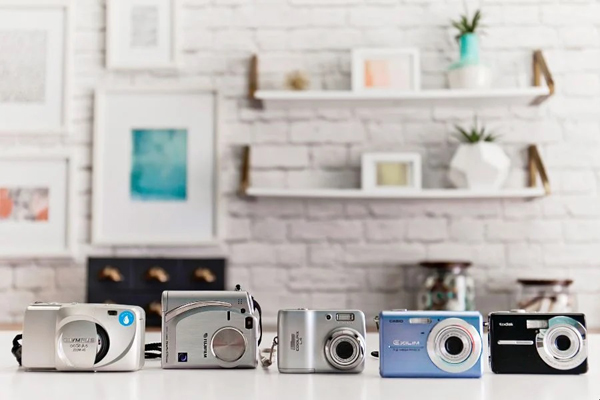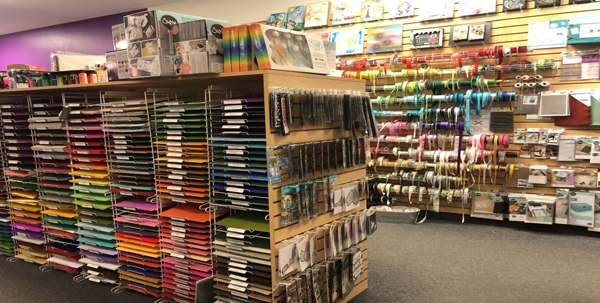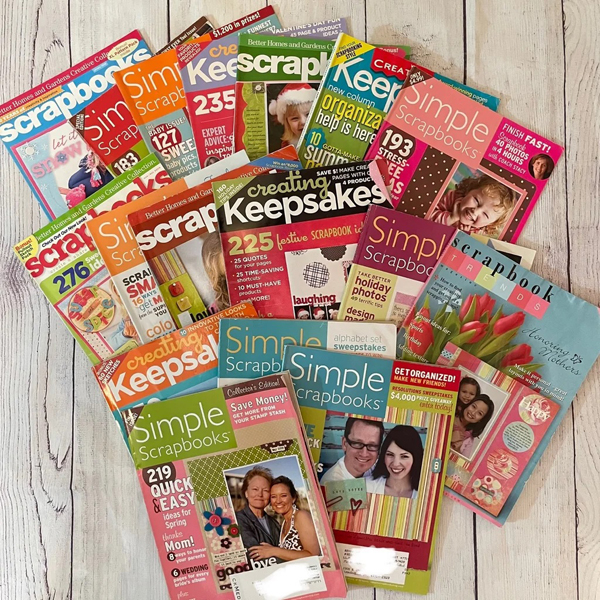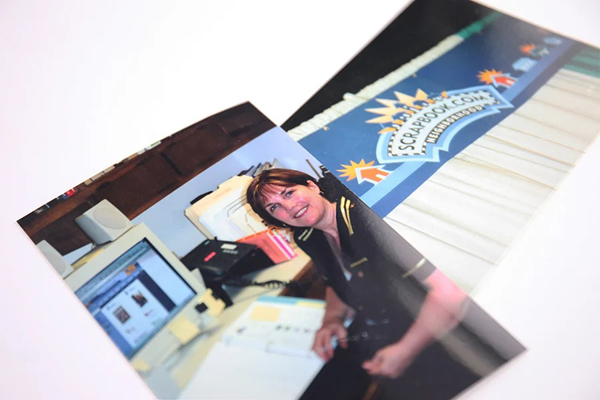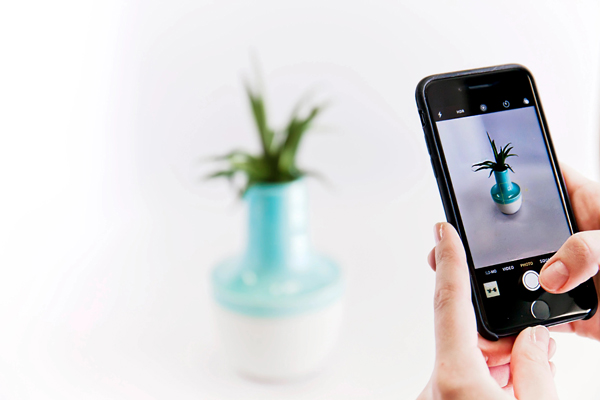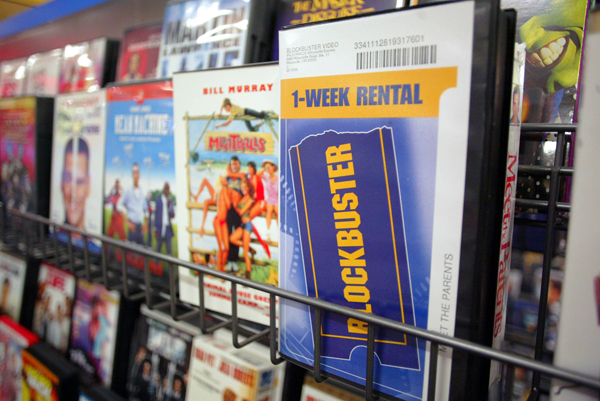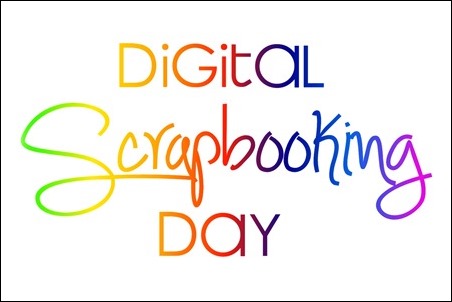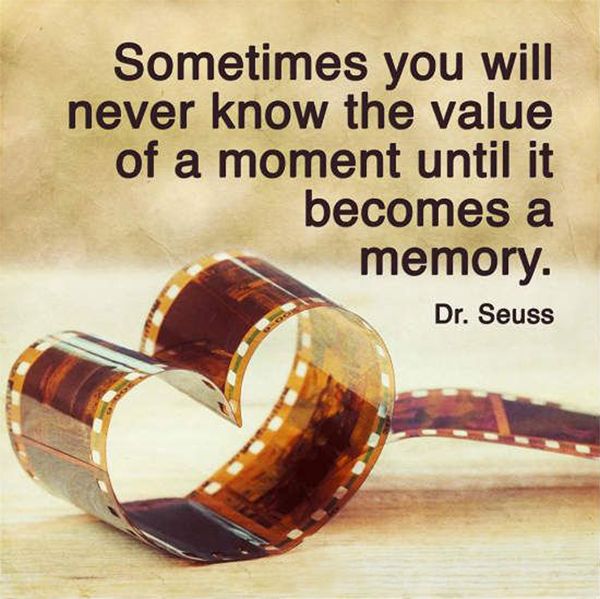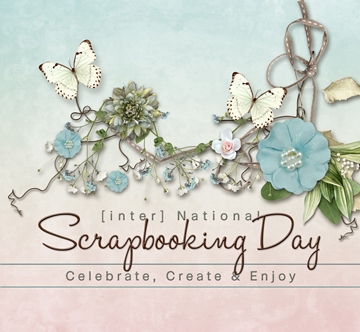
Best Scrapbooking Weekend!
It’s time for inter-National Scrapbooking Day/weekend. Many online festivities have already begun. What a great weekend for all scrapbookers across the world.
National Scrapbooking Day was created in 1994 by Creative Memories. Ever since then it is celebrated on the first Saturday each May. When digital scrapbooking started in the early 2000s, scrappers realized digital scrapbooking was a global community and the “i” for “international” was added to include all scrappers around the world.
Since I don’t sell product and have no special deals to hand out, I thought it might be fitting to celebrate Scrapbooking day by giving you a little history lesson…
Note: The featured image above was created using products from “Nature Journal” by Heartstrings Scrap Art (HSA).
The History Of Scrapbooking
Traditional scrapbooking has been around for centuries (literally since the 15th century). It has always seemed so odd to me that no one decided to give it a “holiday” until 1994. The history of albums, recognizable as something that we’d call a scrapbook today, dates back to not only before the invention of photography – but also before the origin of the word “scrapbook” itself.
Bibles As Scrapbooks
Following the invention of the printing press in the mid-1400s, as well as the proliferation of bibles, many families recorded their family histories on the blank pages at the front (or back) of their family bibles. The annotations included the full names, dates of birth, marriage records, and dates of death. These family records in bibles from the 1400s are some of the earliest forms of personal family history-keeping and represent some of the first attempts to capture it in books. Family bibles have also been instrumental in mapping genealogical roots for millions of people who lived during these centuries.
Books Of Scraps
During the 1800s, the emergence and increased accessibility of printed material sparked a new trend. People began filling blank, bound books – previously used for journals or artwork – with clippings, cards and printed memorabilia. Some of these books contained a mix of personal journal entries, hand-drawn sketches, and watercolors, along with various scraps of printed material. These books were literally books of scraps.
Invention Of Photography
One final invention was needed for scrapbooking to reach its currently recognizable form, of course: photography. Joseph Niépce took the first photograph in 1827, but those early photos were rudimentary and the pictures were fuzzy. By the late 1850s, a form of photography called carte de visite (visit card) started to spread across the United States from Europe. These small photos were about the size of a calling card and were especially popular during the Civil War. Cartes de visite were printed in sheets of eight photographs, and it was common to trade them with friends and family or purchase prints of celebrities. This led to the desire to preserve the collected photos in albums – creating the first true scrapbooks!
Coining The Word Scrapbook
The 1800s also brought the creation of the word “scrapbook”. The first recorded use of the noun “scrap book,” referring to a book with blank pages for pasting items into, is believed to be in 1821. With the rising interest in scrapbooks, companies began selling blank scrapbook albums and glue.
Mark Twain, more widely known as a writer than an inventor, created and patented a self-pasting scrapbook in 1872. Twain’s scrapbook was wildly successful and varying accounts report Twain earning as much as $100,000 from sales of it – a fortune in those days. That number is even more remarkable considering Twain earned $200,000 from all of his other books combined.
The first use of “scrapbook” as a verb was recorded in 1879. Originally the term was seen as two words “scrap book” or hyphenated as “scrap-book” but over time, the two words morphed into one and the accepted and preferred spelling today is one word – “scrapbook”.
Casual Family Photo Albums and Scrapbooks
By the early 1900s some people began combining casual photos with scraps of important memorabilia, letters and decorative die-cuts and images into the same book in a decorative manner. This practice however, was still uncommon and these scrapbooks combining all of these elements in the same book are quite rare.
The Birth Of Modern Scrapbooking
If you had to pinpoint exactly where today’s form of scrapbooking originated, the birth of modern scrapbooking is generally accepted to have occurred in 1980 at a genealogy event called The World Conference on Records. Marielen Christensen was invited to the Church of Jesus Christ of Latter-Day Saints event in Salt Lake City to display her 3-ring binder albums (50 of them!) full of decorated scrapbook pages that she had begun creating a few years earlier. Christensen used archival-safe materials and put her scrapbook pages in clear page protectors – something done for the first time. The concept resonated with Mormon church members, whose faith values family and genealogy research.
In 1981, Christensen opened the first store devoted to scrapbooking called Keeping Memories Alive. The store, located in Spanish Fork, Utah, became a destination for scrapbookers. Scrapbookers from around the country would travel to Utah to visit the Keeping Memories Alive store. Christensen’s original scrapbook pages were, by necessity, on 8 ½” x 11″ letter sized paper. She stored the pages in clear plastic sheet protectors inside three ring binders. This innovative use of page protectors was a key shift in scrapbooking for many reasons. Clear page protectors helped protect photos and pages from damage, but they also paved the way for a new era of page-by-page creation.
By the late 1990s, however, the standard scrapbook page size was shifting to a larger 12″ x 12″ square page that better accommodated 4″ x 6″ photos. Albums began to be available in a variety of types of bindings: strap hinge, post, and ring, to suit a growing community’s growing needs. Some strap hinge albums still had paper pages similar to those of the early scrapbooks, but albums full of sheet protectors (to allow each page to have a different background paper) were increasingly becoming the scrapbook format of choice.
Digital Cameras
The first consumer digital camera was launched into the photography market in 1990. By 2006, Nikon and Canon had stopped development on new film cameras and had shifted all new camera production to entirely digital models. It had been barely over 15 years since the first digital camera was sold, and now film was going the way of the horse and buggy. Digital photography eliminated a major barrier to taking pictures: cost.
With film, each click of the shutter had a price – first to purchase the film itself, and then to develop it. By contrast, a click of the digital shutter to take a photograph was free. Cost per image only became a factor when the photographer chose to print out an image. With this new freedom, photographers began clicking away, taking huge volumes of photos.
The Local Scrapbook Store
By the late 1990s, several local scrapbook stores had popped up around the United States. These stores provided a large selection of scrapbook albums, papers, and other products. The Local Scrapbook Store phenomenon continued into the 2000s. These early local scrapbook stores were a response to the booming interest in scrapbooking, but they were also instrumental in helping spread awareness of scrapbooking.
The Scrapbooking Phenomenon
The 1990s also brought the inception of several scrapbooking magazines. Creating Keepsakes, Memory Makers and others saw meteoric growth during the second half of the 1990s and early 2000s. These magazines taught people across the globe how to scrapbook and they were also instrumental in spreading awareness and interest in the booming hobby. By the late 1990s scrapbooking magazines could be found on magazine stands of chain bookstores and retail stores across the United States.
During the 1990s scrapbookers also began gathering at events called “crops” where they could share supplies and teach each other new techniques. These social scrapbooking gatherings, which still happen today, are similar to quilting gatherings called quilting bee’s that were popularized early in the 20th century.
Creative Memories, Close to my Heart (CTMH), and other home-based retailers of scrapbooking supplies were also very important to the growth of the hobby. CTMH is actually how I got hooked on modern day scrapbooking! Independent representatives for these companies held parties in their homes to teach friends and family members how to scrapbook, sell the supplies needed in order to do so and boost enthusiasm for it.
Jill Davis, an artist and calligrapher, was one of the earliest pioneers in the modern scrapbooking movement. She had been inspired by Marielen Christensen in the early 1980s and started creating her own scrapbooks and developing her own unique scrapbooking techniques and ideas soon after. By the late 1990s, she was teaching sold-out scrapbook classes in Arizona. Davis wanted to share her ideas and love for scrapbooking to a larger audience. In 2000, she and her husband Charlie launched Scrapbook.com, a place where Jill, and others, could teach the world how to scrapbook.
Note: Today, Scrapbook.com hosts the largest gallery of scrapbook projects in the world with over 2.5 Million scrapbook layouts, handmade cards, and other papercrafting projects. Scrapbook.com also offers free high-quality video classes continuing Jill’s original vision.
Smartphone Cameras
The advent of digital photography was a revolution in itself for scrapbooking, but when digital cameras were added to smartphones, it caused a second revolution.
The first mobile camera phone was introduced in 2000, although it wasn’t until about 5 years later that camera phones gained enough traction, and quality, to be truly useful. With the development of quality smartphone cameras, personal photography was transformed once again.
Digital photography and the camera phone changed not just how many photos we could take, but the type of photos that people took. The omnipresence of our smartphones in our pockets or purses, at an arm’s reach, meant that taking photos no longer required planning ahead or remembering to get out the camera and take it with us.
Now, our camera is never far away. It’s ready to use at a moment’s notice. We can and do use photography now to record the everyday minutiae of our lives.
Digital Scrapbooking
As we entered the 21st century, watching Friends, returning rentals to Blockbuster and listening to Alicia Keys, many of us were caught up in the hype of scrapbooking. Looking back now, the early to mid-2000s were a sort of “golden age” for scrapbooking.
But now, in 2023 that’s all a distant memory (at least for me); scrapbooking today is a totally different animal from what it once was. Sadly, the new century was not a bed of roses. The “traditional” scrapbooking industry had begun to plummet dramatically. By 2013 what at its peak had been a 2.5-billion-dollar industry, had now declined by nearly half. This happened for several reasons. One of the biggest was money. Times were tough and many people were struggling. Scrapbooking and other hobbies were some of the first expenses being cut from tightening budgets.
And we can’t forget what happened in 2004. During a time when the popularity of scrapbooking was at an all-time high, the website that would soon become part of everyone’s lives came into being.
Yup — Facebook.
In a few short years Facebook was a household name. It suddenly became easier to share pictures online with family & friends. This kind of put scrapbooking to the wayside. The online digital sharing world appealed to many.
But Facebook could not replace people’s need to be creative. People found a way to keep on scrapbooking in this changing world. Digital scrapbooking had already started. And many saw this as a great way to memory keep with the added bonuses of: No longer having to buy bulky traditional scrapbooking supplies; less cost as any supplies purchased could be used over and over again; and getting to be creative without taking up a lot of space.
A whole new industry resulting in the internet and digital world revolutionized and reinvented scrapbooking in ways I know I could never have imagined. If you read “my story“, you know I was completely blown away by digital scrapbooking.
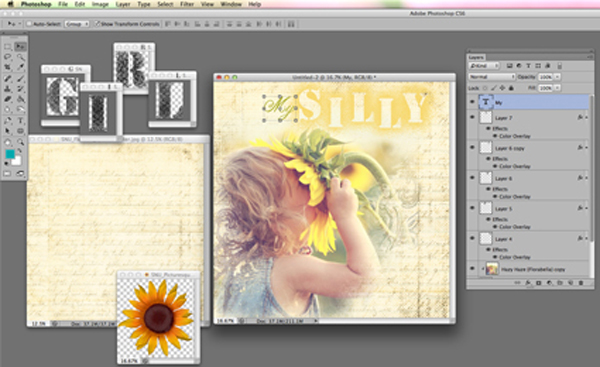
Digital scrapbooking has become a booming memory-keeping and creative craft with a vibrant and welcoming online community. Wikipedia describes digital scrapbooking as “the creation of a new 2D artwork by re-combining various graphic elements. It is a form of scrapbooking that is done using a personal computer, digital or scanned photos and computer graphics software. It is a relatively new form of the traditional print scrapbooking.”
Now with your computer and the internet you are no longer confined by location or limited design choices. What was once a hobby restricted to what a few exclusive designers and stores wanted to sell, is now limited only by our imagination. Not to mention one of the biggest perks of digital scrapbooking, there’s no clean up! And digital scrapbooking has created a truly global scrapbooking community. Something that was nearly impossible in “the olden days” of paper scrapbooking.
I personally have never felt more creative than I have after embracing digital scrapbooking! And I have friends all over the world who share in the experience with me. What more could you ask of a hobby?
Digital Scrapbooking Day
Digital Scrapbooking Day (DSD) was first established in 2007 to create awareness specifically for digital scrapbooking – not only as a creative way to document and display memories, but also as a means to archive photos and memorabilia safely digitally. DSD, now celebrated the first Saturday of each October, is intended to act as a catalyst to set aside some time at least annually to digitally documenting your personal history.
But DSD isn’t just about digital scrapbooking, the hobby – DSD celebrates all that today’s technology can do to help preserve your precious memories. That means that anyone can participate in DSD – scrapbookers (whether traditional, “hybrid,” or digital), photographers, genealogists, memoirists, personal journalists, bloggers, podcasters, and related retailers all will find something to celebrate on DSD.
It’s All About Memory Keeping
Whether you have memories stored in some form on a computer, or in albums full of pages with 3D embellishments, you have reason to celebrate. Saving pieces of our lives is what scrapbooking is all about. Keeping memories in a scrapbook, even if only of our day-to-day life, becomes history for future generations.
Traditional or Digital, enjoy inter-National Scrapbooking weekend. And remember, the other best scrapbooking day (Digital Scrapbooking Day) is just around the corner…
